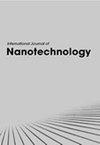Detection of brain tumour using machine learning based framework by classifying MRI images
IF 0.3
4区 材料科学
Q4 MATERIALS SCIENCE, MULTIDISCIPLINARY
引用次数: 0
Abstract
The fatality rate has risen in recent years due to an increase in the number of encephaloma tumours in each age group. Because of the complicated structure of tumours and the involution of noise in magnetic resonance (MR) imaging data, physical identification of tumours becomes a difficult and time-consuming operation for medical practitioners. As a result, recognising and locating the tumour's location at an early stage is crucial. Cancer tumour areas at various levels may be followed and prognosticated using medical scans, which can be utilised in concert with segmentation and relegation techniques to provide a correct diagnosis at an early time. This paper aims to develop image processing and machine learning based framework for early and accurate detection of brain tumour. This framework includes image preprocessing, image segmentation, feature extraction, and classification using the support vector machine (SVM), K-nearest neighbour (KNN), and Naïve Bayes algorithms. Image preprocessing is performed using Gaussian Elimination, image enhancement using histogram equalisation, image segmentation using k-means and feature extraction performed using PCA algorithm. For performance comparison, parameters like: accuracy, sensitivity and specificity are used. Experimental results have shown that the KNN is getting better accuracy for classification of brain tumour related images. KNN is performing admirably in terms of accuracy. In terms of specificity, both SVM and KNN perform similarly well. KNN outperforms other algorithms in terms of sensitivity. Accuracy of KNN classifier is around 98% in brain tumour image classification.基于机器学习框架的MRI图像分类脑肿瘤检测
近年来,由于每个年龄组中脑瘤肿瘤的数量增加,死亡率有所上升。由于肿瘤的复杂结构和磁共振成像数据中的噪声,对医生来说,肿瘤的物理识别是一项困难且耗时的工作。因此,在早期阶段识别和定位肿瘤的位置至关重要。可以使用医学扫描跟踪和预测不同级别的癌症肿瘤区域,这可以与分割和降级技术一起使用,以便在早期提供正确的诊断。本文旨在开发基于图像处理和机器学习的框架,用于早期和准确检测脑肿瘤。该框架包括图像预处理、图像分割、特征提取以及使用支持向量机(SVM)、k近邻(KNN)和Naïve贝叶斯算法进行分类。图像预处理使用高斯消去,图像增强使用直方图均衡化,图像分割使用k-means和特征提取使用PCA算法进行。用于性能比较的参数有:准确性、灵敏度和特异性。实验结果表明,KNN对脑肿瘤相关图像的分类具有较好的准确性。KNN在准确性方面的表现令人钦佩。在特异性方面,SVM和KNN的表现相似。在灵敏度方面,KNN优于其他算法。KNN分类器在脑肿瘤图像分类中的准确率在98%左右。
本文章由计算机程序翻译,如有差异,请以英文原文为准。
求助全文
约1分钟内获得全文
求助全文
来源期刊

International Journal of Nanotechnology
工程技术-材料科学:综合
CiteScore
0.60
自引率
20.00%
发文量
45
审稿时长
6-12 weeks
期刊介绍:
IJNT offers a multidisciplinary source of information in all subjects and topics related to Nanotechnology, with fundamental, technological, as well as societal and educational perspectives. Special issues are regularly devoted to research and development of nanotechnology in individual countries and on specific topics.
 求助内容:
求助内容: 应助结果提醒方式:
应助结果提醒方式:


